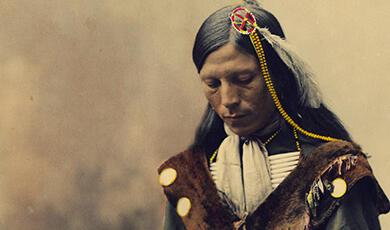Press release: Queen Victoria: Images of Power and Empire

Queen Victoria used paintings and photography as a weapon of power
Images range from Empress of India to the Widow of Windsor
Examines intimacies and tensions of Victoria and Albert’s relationship through their portraits
Embargo: 15 Feb 2023 7pm
We would like to invite you to a lecture by acclaimed historian and biographer Professor Jane Ridley on Queen Victoria: Images of Power and Empire, on 15 Feb 2023. This is the second lecture in the series Portraiture and Power (next lecture: portraits of Queen Elizabeth II by Philip Mould).
In this lecture, Ridley explores the portraits and paintings of Queen Victoria showing that she understood how to use these images as a tool for communicating power. The images which Ridley looks at have received little attention compared to the extensive writing and correspondence of Victoria.. Ridley will explore the changing nature of these images of Queen Victoria over time from the young wife and mother to representing herself as Empress of India and as a mourning widow.
She will use images of Victoria and Albert to examine the dynamic and tensions of their relationship as well as its intimate nature. On the portrait of The Royal Family in 1846, painted by the Austrian court painter Winterhalter, she will say: “This is a royal family on show to the world. It is also a diagram of the domestic dynamic. The Queen sits on Albert’s right as protocol required – she was the head of state - but she stares blankly out of the picture frame, while Albert’s gaze is fixed on Bertie, his son and heir. The royal couple’s fingers are lovingly entwined; but Albert’s position as head of the family is clearly signalled. He is the dominating, dynamic figure, protecting his wife from the outside world.”
She will also look at the ‘secret’ 1843 painting of Queen Victoria which she commissioned for Albert for his birthday which was never shown publicly. This unique, intimate image of Victoria wearing her hair loose, reveals another side to the Queen not seen in her public portraits.
“Winterhalter’s 1859 portrait of Victoria shows her in conventional monarch’s pose. She wears robes of state, and the Imperial State Crown rests beside her. Surrounded by columns signifying the stability of her reign, she looks out over Westminster, holding papers in her left hand – a gesture suggesting the harmonious working of crown and parliament in a constitutional monarchy.” This image was used by Victoria to communicate her power and the stability of her position as monarch, but this was soon to change.
The sudden death of Albert in 1861 signalled the end of this sense of stability, triggering a crisis when the Queen refused to appear in public . Victoria responded again by using art as a weapon. She commissioned a painting to show her in mourning, but it met with a mixed response from the public and backfired. Through photography she was able to better control the public narrative about her.
Ridley will also explore how Victoria’s image was used to communicate her power through the Indian Empire. She will describe how “Winterhalter’s painting of her wearing the Koh-i-Nor (1856) is an image of power, plunder and greed: the Queen showcases what was at the time the biggest diamond in the world.” She will also look at the unique and controversial photograph of Victoria with Abdul Karim, who became her Urdu teacher and private secretary.
Ridley examines the 1887 portrait of the Queen Empress at her Golden Jubilee surrounded by her extended family. By delving into the details of this painting, she shows how this image is a lot more than the ‘charming’ family painting that Victoria considered it to be. It signalled the dynastic power of the black-dressed Queen.
Ridley will conclude by looking at perhaps the most famous images of Queen Victoria, showing her as the grieving widow forever in black mourning. She describes this image of the ‘Widow of Windsor’ as one of power showing a domestic sovereign, committed to the welfare of the people.
ENDS
Notes for Editors
Read more about Professor Jane Ridley, Professor of Modern History at the University of Buckingham and a leading biographer of royals.
You can sign up to watch the hybrid lecture online or in person; or email us for an embargoed transcript: l.graves@gresham.ac.uk / 07799 738 439


 Login
Login



